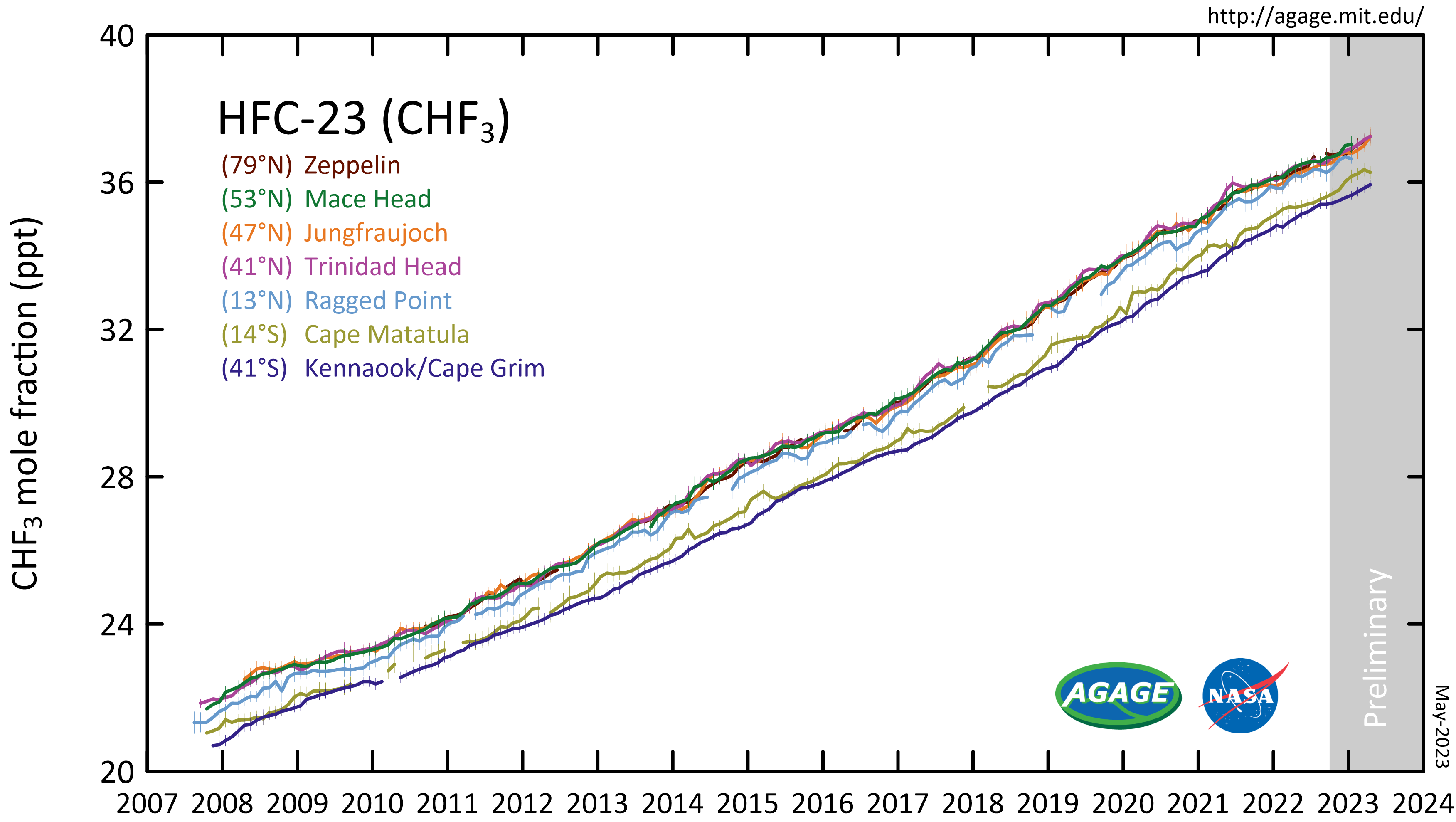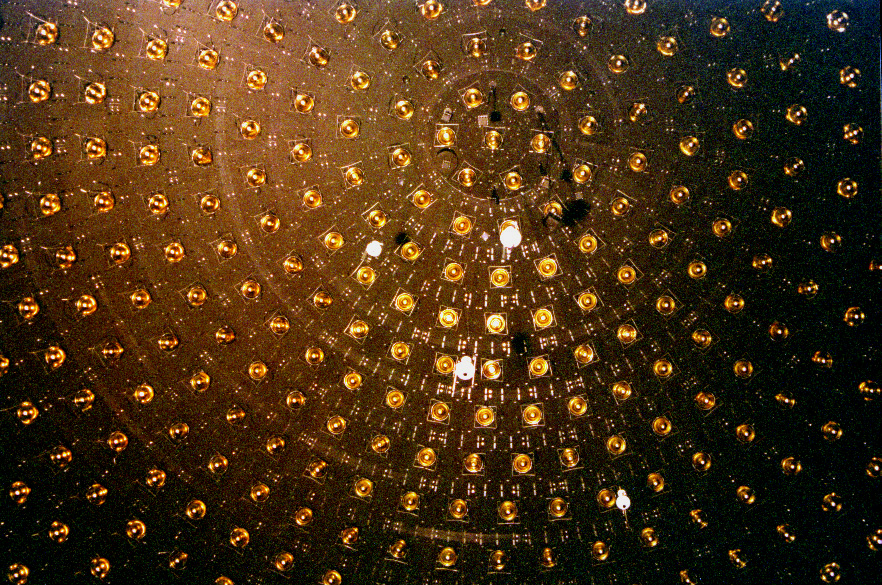|
Bromotrifluoromethane
Bromotrifluoromethane, commonly referred to by the code numbers Halon 1301, R13B1, Halon 13B1 or BTM, is an organic halide with the chemical formula carbon, Cbromine, Brfluorine, F3. It is used for gaseous fire suppression as a far less toxic alternative to bromochloromethane. Table of physical properties Synthesis Bromotrifluoromethane is commercially synthesized in a two-step process from chloroform. Chloroform is fluorinated with hydrogen fluoride. CHCl3 + 3 HF → CHF3 + 3 HCl The resulting Fluoroform is then reacted with elemental bromine. CHF3 + Br2 → CF3Br + HBr Uses Halon 1301 was developed in a joint venture between the U.S. Army and Purdue University in the late 1940's, and became a DuPont product in 1954. It was introduced as an effective gaseous fire suppression fixed systems agent in the 1960s, and was used around valuable materials, such as aircraft, Mainframe computer, mainframe computers, and telecommunication telephone exchange, switching centers, ... [...More Info...] [...Related Items...] OR: [Wikipedia] [Google] [Baidu] |
Halon Fire Suppression Warning Sign
Halon may refer to: * Haloalkane, or halogenoalkane, a group of chemical compounds consisting of alkanes with linked halogens (in particular, bromine-containing haloalkanes) * Halomethane compounds: ** Halon 10001 (iodomethane) ** Halon 1001 (bromomethane) ** Halon 1011 (bromochloromethane, CH2BrCl) ** Halon 104 (carbon tetrachloride) ** Halon 1103 (tribromofluoromethane) ** Halon 112 (dichlorofluoromethane) ** Halon 1201 (bromodifluoromethane) ** Halon 1202 (dibromodifluoromethane) ** Halon 1211 (bromochlorodifluoromethane, CF2ClBr) ** Halon 122 (dichlorodifluoromethane) ** Halon 1301 (bromotrifluoromethane, CBrF3) ** Halon 14 (tetrafluoromethane) * Halon 2011B (1-bromo-2-chloroethane) * Halon 2301 (1,1,1-trifluoro-2-bromoethane) * Halothane, Halon 2311 (1,1,1-trifluoro-2,2-chlorobromoethane, halothane) * Halon 242 (1,2-dichlorotetrafluoroethane) * Dibromotetrafluoroethane, Halon 2402 (dibromotetrafluoroethane, C2Br2F4)—used as a fire extinguisher * Halon 2501 (pentafluorobr ... [...More Info...] [...Related Items...] OR: [Wikipedia] [Google] [Baidu] |
Gaseous Fire Suppression
Gaseous fire suppression, also called clean agent fire suppression, is the use of inert gases and chemical agents to extinguish a fire. These agents are governed by the National Fire Protection Association (NFPA) Standard for Clean Agent Fire Extinguishing Systems – NFPA 2001 in the US, with different standards and regulations elsewhere. The system typically consists of the agent, agent storage containers, agent release valves, fire detectors, fire detection system (wiring control panel, actuation signaling), agent delivery piping, and agent dispersion nozzles. Theory There are four means used by the agents to extinguish a fire. They act on the " fire tetrahedron": * Reduction or isolation of fuel. No agents currently use this as the primary means of fire suppression. * Reduction of heat. Representative agents: Clean agent FS 49 C2 (NAF S 227, MH227, FM-200), Novec 1230, pentafluoroethane (NAF S125, ECARO-25). * Reduction or isolation of oxygen: Representative agents: IG-0 ... [...More Info...] [...Related Items...] OR: [Wikipedia] [Google] [Baidu] |
Halon 1301 Fire Extinguisher
Halon may refer to: * Haloalkane, or halogenoalkane, a group of chemical compounds consisting of alkanes with linked halogens (in particular, bromine-containing haloalkanes) * Halomethane Halomethane compounds are derivatives of methane () with one or more of the hydrogen atoms replaced with halogen atoms (Fluorine, F, Chlorine, Cl, Bromine, Br, or Iodine, I). Halomethanes are both naturally occurring, especially in marine environm ... compounds: ** Halon 10001 (iodomethane) ** Halon 1001 (bromomethane) ** Halon 1011 (bromochloromethane, CH2BrCl) ** Halon 104 (carbon tetrachloride) ** Halon 1103 (tribromofluoromethane) ** Halon 112 (dichlorofluoromethane) ** Halon 1201 (bromodifluoromethane) ** Halon 1202 (dibromodifluoromethane) ** Halon 1211 (bromochlorodifluoromethane, CF2ClBr) ** Halon 122 (dichlorodifluoromethane) ** Halon 1301 (bromotrifluoromethane, CBrF3) ** Halon 14 (tetrafluoromethane) * Halon 2011B (1-bromo-2-chloroethane) * Halon 2301 (1,1,1-trifluoro-2-br ... [...More Info...] [...Related Items...] OR: [Wikipedia] [Google] [Baidu] |
Trifluoromethyltrimethylsilane
Trifluoromethyltrimethylsilane (known as Ruppert-Prakash reagent, TMSCF3) is an organosilicon compound with the formula CF3Si(CH3)3. It is a colorless liquid. The compound is a reagent used in organic chemistry for the introduction of the trifluoromethyl group. The compound was first prepared in 1984 by Ingo Ruppert and further developed as a reagent by G. K. Surya Prakash. Preparation The reagent is prepared from trimethylsilyl chloride and bromotrifluoromethane in the presence of a phosphorus(III) reagent that serves as a halogen acceptor. Use in organic synthesis In the presence of a metal salt (M+ X−), the reagent reacts with aldehydes and ketones to give a trimethylsilyl ether, the net product of insertion of the carbonyl into the Si-CF3 bond. Hydrolysis gives trifluoromethyl methanols. The reagent also converts esters to trifluoromethyl ketones. A typical initiator is a soluble fluoride-containing species such as tetrabutylammonium fluoride; however, simple alkoxides ... [...More Info...] [...Related Items...] OR: [Wikipedia] [Google] [Baidu] |
Bromine
Bromine is a chemical element; it has chemical symbol, symbol Br and atomic number 35. It is a volatile red-brown liquid at room temperature that evaporates readily to form a similarly coloured vapour. Its properties are intermediate between those of chlorine and iodine. Isolated independently by two chemists, Carl Jacob Löwig (in 1825) and Antoine Jérôme Balard (in 1826), its name was derived , referring to its sharp and pungent smell. Elemental bromine is very reactive and thus does not occur as a free element in nature. Instead, it can be isolated from colourless soluble crystalline mineral halide Ionic salt, salts analogous to table salt, a property it shares with the other halogens. While it is rather rare in the Earth's crust, the high solubility of the bromide ion (Br) has caused its Bromine cycle, accumulation in the oceans. Commercially the element is easily extracted from brine evaporation ponds, mostly in the United States and Israel. The mass of bromine in the oce ... [...More Info...] [...Related Items...] OR: [Wikipedia] [Google] [Baidu] |
HFC-23
Fluoroform, or trifluoromethane, is the chemical compound with the formula . It is a hydrofluorocarbon as well as being a part of the haloforms, a class of compounds with the formula (X = halogen) with C3v symmetry. Fluoroform is used in diverse applications in organic synthesis. It is not an ozone depleter but is a greenhouse gas. Synthesis About 20 million kg per year are produced industrially as both a by-product of and precursor to the manufacture of Teflon. It is produced by reaction of chloroform with HF: : It is also generated biologically in small amounts apparently by decarboxylation of trifluoroacetic acid. Historical Fluoroform was first obtained by Maurice Meslans in the violent reaction of iodoform with dry silver fluoride in 1894. The reaction was improved by Otto Ruff by substitution of silver fluoride by a mixture of mercury fluoride and calcium fluoride. The exchange reaction works with iodoform and bromoform, and the exchange of the first two halogen ... [...More Info...] [...Related Items...] OR: [Wikipedia] [Google] [Baidu] |
Organic Synthesis
Organic synthesis is a branch of chemical synthesis concerned with the construction of organic compounds. Organic compounds are molecules consisting of combinations of covalently-linked hydrogen, carbon, oxygen, and nitrogen atoms. Within the general subject of organic synthesis, there are many different types of synthetic routes that can be completed including total synthesis, Enantioselective synthesis, stereoselective synthesis, automated synthesis, and many more. Additionally, in understanding organic synthesis it is necessary to be familiar with the methodology, techniques, and applications of the subject. Total synthesis A total synthesis refers to the complete chemical synthesis of molecules from simple, Precursor (chemistry), natural precursors. Total synthesis is accomplished either via a linear or convergent approach. In a Linear synthesis, ''linear'' synthesis—often adequate for simple structures—several steps are performed sequentially until the molecule is com ... [...More Info...] [...Related Items...] OR: [Wikipedia] [Google] [Baidu] |
HFC-227ea
1,1,1,2,3,3,3-Heptafluoropropane, also called heptafluoropropane, HFC-227ea (ISO name), HFC-227 or FM-200, as well as apaflurane ( INN), is a colourless, odourless gaseous halocarbon commonly used as a gaseous fire suppression agent. Chemistry Its chemical formula is CF-CHF-CF, or CHF. With a boiling point of −16.4 °C, it is a gas at room temperature. It is slightly soluble in water (260 mg/L). Use HFC-227ea is used in fire suppression systems that protect data processing and telecommunication facilities, and in fire suppression of many flammable liquids and gases. HFC-227ea is categorized as a Clean Agent and is governed by ''NFPA 2001 - Standard for Clean Agent Fire Extinguishing Systems''. Effective fire suppression requires introducing a concentration of the HFC-227ea agent between 6.25% and 9% depending on the hazard being suppressed. Its NOAEL for cardiac sensitization is 9%. The United States Environmental Protection Agency allows concentration of 9% volu ... [...More Info...] [...Related Items...] OR: [Wikipedia] [Google] [Baidu] |
H-1301 Mm
H13, H-13 or H.13 may refer to: Roads * H-13 (Michigan county highway), a road in the United States * Highway H13 (Ukraine) Vehicles * Bell H-13 Sioux, an American helicopter * , a H-class submarine ordered by but not commissioned into the Royal Navy * Lioré et Olivier LeO H-13, a French flying boat * LSWR H13 class, a British steam railcar Other uses * DIN 1.2344 tool steel, a tool steel grade * London Buses route H13, a public transportation route in England * A class of high-efficiency particulate air filter {{Letter-Number Combination Disambiguation ... [...More Info...] [...Related Items...] OR: [Wikipedia] [Google] [Baidu] |
Gargamelle
Gargamelle was a heavy liquid bubble chamber detector in operation at CERN between 1970 and 1979. It was designed to detect neutrinos and antineutrinos, which were produced with a beam from the Proton Synchrotron (PS) between 1970 and 1976, before the detector was moved to the Super Proton Synchrotron (SPS). In 1979 an irreparable crack was discovered in the bubble chamber, and the detector was decommissioned. It is currently part of the "Microcosm" exhibition at CERN, open to the public. Gargamelle is famous for being the experiment where neutral currents were discovered. Found in July 1973, neutral currents were the first experimental indication of the existence of the Z0 boson, and consequently a major step towards the verification of the electroweak theory. Gargamelle can refer to both the bubble chamber detector itself, or the high-energy physics experiment by the same name. The name itself is derived from a 16th-century novel by François Rabelais, '' The Life of G ... [...More Info...] [...Related Items...] OR: [Wikipedia] [Google] [Baidu] |
Neutrino Detector
A neutrino detector is a physics apparatus which is designed to study neutrinos. Because neutrinos only weakly interact with other particles of matter, neutrino detectors must be very large to detect a significant number of neutrinos. Neutrino detectors are often built underground, to isolate the detector from cosmic rays and other background radiation. The field of neutrino astronomy is still very much in its infancy – the only confirmed extraterrestrial sources are the Sun and the supernova 1987A in the nearby Large Magellanic Cloud. Another likely source (three standard deviations) is the blazar TXS 0506+056 about 3.7 billion light years away. Neutrino observatories will "give astronomers fresh eyes with which to study the universe". Various detection methods have been used. Super Kamiokande is a large volume of water surrounded by phototubes that watch for the Cherenkov radiation emitted when an incoming neutrino creates an electron or muon in the water. The ... [...More Info...] [...Related Items...] OR: [Wikipedia] [Google] [Baidu] |



